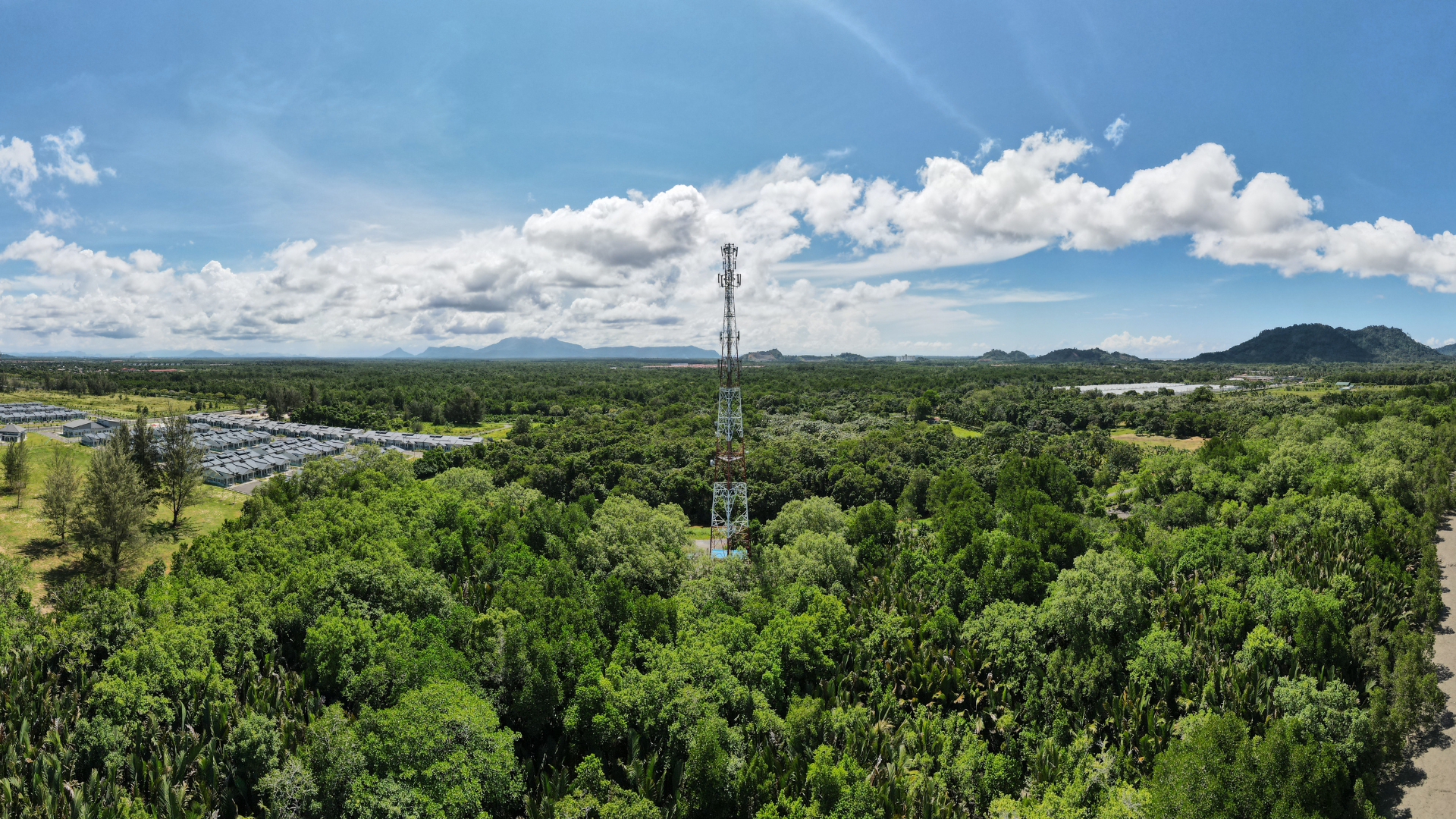Incorporating Climate Justice into AI Development
The data-centric nature of AI development presents environmental challenges, demanding sustainable solutions.
In the realm of environmental stewardship, the integration of artificial intelligence (AI) holds immense promise for addressing pressing challenges, particularly in underserved communities of the Global South. However, this potential comes with ethical considerations that must not be overlooked. As we navigate the complex intersection of AI technology and environmental concerns, it becomes increasingly evident that a collaborative and inclusive approach is essential.
Successful solutions require active community participation, transparent governance, and equitable distribution of resources and to understand all of these issues, their interconnectedness and possible solutions, Raphael Tsavkko Garcia, from REVOLVE, spoke with Natalie Unterstell, president of the Talanoa think tank.
How can AI be used ethically to address environmental challenges in underserved communities in the Global South?
AI needs to be integrated into the environmental context with the understanding that, in this field, the problems faced are collective, such as deforestation, climate change, and air pollution. They are called ‘tragedies of the commons’ precisely because they are not restricted to a single individual or group but affect everyone who depends on nature’s production for their well-being. Moreover, they often transcend the local – they are regional, global, cross-border issues. And not all of them are ‘visible’ or immediately perceived by the communities.
Elinor Ostrom, in her seminal work that earned her the Nobel Prize in Economics, highlighted the necessary conditions for communities to effectively address the tragedy of the commons. Among these conditions are the clarity of property rights over the resource, active user participation in decision-making, monitoring, and enforcement capacity, as well as effective conflict resolution mechanisms.
The ethical approach to addressing environmental challenges in ‘marginalized’ communities requires the collaborative and inclusive application of AI technologies.
By bringing these principles into the realm of artificial intelligence, I understand that the ethical approach to addressing environmental challenges in ‘marginalized’ communities requires the collaborative and inclusive application of AI technologies. This means involving local communities from the outset, ensuring that their voices are truly heard and that they actively participate in defining goals and solutions.
Furthermore, it is essential to establish transparent and accountable governance systems that allow for the continuous monitoring and evaluation of the impacts of AI technologies on the environment and local communities. This includes clearly defining property rights over the data and resources used by AI, as well as effective mechanisms for accountability and conflict resolution.
This not only ensures the relevance and effectiveness of solutions but also strengthens the capacity of communities to become protagonists. Without this, there is no way to evolve AI as a solution to ‘tragedies of the commons’ that makes sense for collectives. In summary, the ethical use of AI to address socio-environmental challenges requires an approach based on collaboration, participation, and shared responsibility.
The ethical use of AI to address socio-environmental challenges requires an approach based on collaboration, participation, and shared responsibility.
How does the data-centric nature of AI development contribute to environmental concerns, especially in terms of carbon footprint and resource consumption?
On the one hand, the evolution of AI offers the opportunity to ‘dematerialize’ the economy, therefore, I believe AI is indispensable for solving contemporary environmental problems. On the other hand, while it can contribute to the solution, it also contributes to the problem.
For example, the data centers that power AI systems have been called energy ‘devourers’ as they consume an absurd amount of electricity, often from non-renewable sources. This obviously contributes to greenhouse gas emissions and strains energy systems. We know that this consumption is only expected to increase because AI is still expected to grow significantly: there are estimates showing that AI will require between four and ten times more energy than the current demand of global servers in the coming years.
Therefore, it is essential that AI development be adapted to contribute to and accelerate the transition to zero emissions, rather than being a barrier to it. This includes optimizing AI algorithms and architectures to reduce the demand for computational resources, as well as investing in renewable energy sources to power data centers. Additionally, recycling, and reusing computing hardware can reduce waste and minimize the environmental impact of the technology industry.
AI will require between four and ten times more energy than the current demand of global servers in the coming years.
The responsibility does not solely fall on AI developers, but also on governments, companies, and consumers. Stricter environmental policies and regulations are needed to incentivize the adoption of sustainable practices in the technology industry, while awareness and public education can promote more responsible consumption choices. In developing countries, we need innovations in the industry and infrastructure for AI focused on the transition to zero emissions.

What are the implications of the digital divide/digital colonialism, especially in the Global South?
Today, developing countries rely on technologies and platforms developed in wealthy countries, resulting in a relationship of dependence and inequality in access to digital resources and knowledge. Technology companies often have control over digital infrastructure in developing countries, such as social networks, cloud services, and e-commerce platforms. This limits the ability of developing countries to regulate and protect their own digital data and resources, putting their citizens at risk.
In particular, the gap between those who have access to and skills to use digital technologies and those who do not in these countries is already quite large. And it is often accentuated by income disparities, limited infrastructure, and lack of access to quality education. This has profound implications for addressing environmental problems, as the affected communities are generally those ‘on the other side of the digital fence.’ Nowadays, they are connected, but are still paying a high price for this access and not benefiting fully.
Today, developing countries rely on technologies and platforms developed in wealthy countries, resulting in a relationship of dependence and inequality in access to digital resources and knowledge.
Furthermore, the production of technological resources itself has generated concern in developing countries. Especially, the race for critical minerals for digital transformation has involved environmental degradation and economic inequality among countries. The extraction of rare minerals and metals, such as cobalt and lithium, necessary for the manufacture of many devices, often occurs under precarious working conditions and significant environmental impacts. This implies deforestation, water and soil pollution, and loss of biodiversity, harming local communities and exacerbating economic inequality between producing countries and technology consumers.
How can principles of climate justice be integrated into discussions about AI development and data collection to ensure equitable distribution of environmental burdens and benefits?
Climate justice recognizes that climate change disproportionately impacts the most vulnerable communities, who have contributed less to carbon emissions but suffer the most severe consequences. Prioritizing that AI solutions be developed with a community-centered approach, involving community members from conception to project implementation is the right way to go.
Furthermore, it is crucial to consider the social and environmental impacts of AI technologies when designing and implementing solutions to address climate challenges. This includes carefully assessing how AI solutions may affect different groups of people and communities, avoiding the amplification of existing inequalities.
Prioritizing that AI solutions be developed with a community-centered approach, involving community members from conception to project implementation is the right way to go.
It is also important to prioritize equitable access to information and resources needed to address climate change, ensuring that the most vulnerable communities have access to the technologies and data needed to adapt and mitigate the impacts of climate change. We are far from this in countries like Brazil.

In what ways can AI and data collection exacerbate existing inequalities, especially in marginalized communities, and what measures can be taken to address this problem?
Ensuring that the data used to train AI models is representative and non-discriminatory is essential to avoid amplifying existing socio-environmental injustices. Additionally, rigorous data protection policies and transparent governance are necessary to ensure the trust of local communities in the use of AI to address local and especially global environmental challenges.
Furthermore, marginalized communities often have less access to the resources and skills necessary to benefit from AI technologies, creating a digital divide that increases their exclusion and marginalization. This can lead to greater disparity in access to educational, economic, and health opportunities, further exacerbating social inequalities.
How can indigenous/traditional/peripheral knowledge inform more sustainable approaches to AI development and data collection, especially in terms of respecting nature and promoting coexistence?
We already have a series of examples of AI uses in the prediction and mitigation of natural disasters, such as droughts, floods, and hurricanes, providing early warnings and facilitating evacuation and rapid response, which rely on inputs from communities and peoples. Also, in the sustainable management of natural resources, such as water and forests, through real-time monitoring and analysis of usage patterns. For example, AI algorithms already analyze satellite data to identify areas of illegal deforestation and mining activities on indigenous lands in Brazil, supporting indigenous territorial surveillance systems. These are examples of using AI in the service of communities. But we still have much to advance in AI development approaches.
Indigenous knowledge systems can offer valuable insights into designing and adapting AI technologies to the needs and values of local communities.
For example, traditional resource management practices can inspire innovative approaches to biodiversity conservation and sustainable use of natural resources, while indigenous knowledge systems can offer valuable insights into designing and adapting AI technologies to the needs and values of local communities.
Additionally, it is important to recognize and respect the rights of indigenous peoples and local communities over their traditional knowledge and natural resources, ensuring that they are properly consulted and involved in the development of technologies that affect their lives and territories.